beef bourguignon . bread . simply decadent
Simple and decadent is an oxymoron I am happy with in this luscious decadent stew. It will take 24 hours to complete but is well worth it when you see the faces around the table.
Because there are lots of pictures in my posts, the article is almost always too long for email, so click on the LIKE and it will take you to the full post. Thank you so much!
Beef Bourguignon is the most decadent, rich, hearty stew we make - so full of generous flavours. What I love is that I can taste each of the components of the stew. And it is the multiple steps that ensure this generous taste profile. so no cheating! The marinating and caramalizing and slow cooking gives even the humble onion a chance to shine.
There is no way I can write this recipe any better than Nagi so if you want to make it - grab the recipe HERE👇🏼. Follow each step - caramilizing the vegetables and reducing the wine marinade adds great depth to the taste profile of this incredible stew.
Beef Bourguignon from Recipe Tin Eats
This is what we loaded into the fridge the night before. Top with a plate to keep the meat and veges submerged in the wine marinade.
We used pickling onions which are a bit bigger than pearl onions so they went in a bit earlier but cooked beautifully.
Look at the pink in that onion tip after a night soaking in wine. Get a really big bowl and marinade everything over night. We never miss this step. Reducing the red wine marinade the next day fills the house with the gorgeous deep notes of Pinot Noir. A chef I once knew told me that if I did not want to drink the wine as I cooked, why on earth would I cook with the wine. So, find a nice affordable bottle but don’t buy anything that is labelled Red Wine - just sayin’. (actually ever) A Pinot Noir is traditional for this dish.
We used a cartouche to cover the stew to prevent skin forming during a long cook. A cartouche is a piece of baking paper cut to the shape of the pot or just cut and scrunched into the pot as a lid. I can never find lids in someone else’s pot cupboard so I use this technique often.
A cartouche is a parchment paper lid, also known as a false lid, used for covering the surface of a stew, sauce, or soup. It traps steam keeping stewed components submerged in liquid, reduces evaporation, and prevents a skin from forming on the surface of sauce.
We put the lid on top of the cartouche for most of the oven time. We made the beef bourguignon with 1.2kg of beef and masses of vegetables so we have made the protein for eight meals for two. After eating this for dinner last night the rest will be divided and frozen in portions. Don’t leave it in the freezer longer than a couple of weeks. Add a salad, mashed potatoes and some tasty bread and life is good.
Creamy potato mash using a ricer
Peel the potatoes - something I never do (lazy cook remember) but Daughter does not like peel in her mashed potatoes and she is 38 weeks pregnant so I am not arguing. Once the potatoes are cooked and well drained, push the hot potato through the ricer. Add copious amounts of butter and cream. Then quickly whip the potato into shape. Don’t whip for too long as the potato will go gluey. Over mashing the mash is a thing, people!
Two slim batards
This meal demands bread to mop every last drop from the bowl. Of course I remembered to make bread just a little too late in the day so here is my Quick Quick Bread recipe. I have added cup measurements in case you don’t have a set of scales but I do recommend you use scales for bread making. Buy a small durable set and travel with them!
Sponge (made the night before)
1/3 cup flour (approx. 40g)
1/3 cup water (approx. 80g)
Pinch of yeast (less than 1g)
Leave in a bowl on the counter overnight, actually I forgot this one and it sat until the following afternoon!
Quick Quick Lazy Batard
350g high-protein flour (approx. 2½ cups)
160g wholemeal flour (approx. 1½ cups)
310g water (approx. 1½cups) – reserve a little or add a touch more if needed - hydration depends on your flour plus different flours weigh differently - ask me about this in the comments - I can happily talk about wheat and flours and hydration forever.
10g yeast (approx. 2 teaspoons)
8g salt (approx. 1¼ teaspoons)
Fluff the flours together with a whisk or a sieve. Make a well in the centre.
Pour the water into the well. Sprinkle the yeast over the water. Sprinkle the salt around the edge of the bowl into the dry flour.
Pour the sponge into the well with the yeast and water if you're using a sponge. Whisk in the centre of the well with a fork to incorporate the flour, then use your wet hands to gently mix everything together. Rest the shaggy mess for twenty minutes to hydrate the flour.
(This is my lazy way to make a loaf with minimal intervention - as close to no-knead as I get). It breaks all the rules! But bread is wonderfully forgiving.
After the rest, stretch and fold a few times. Then every 20 minutes - stretch and fold a couple of times again - until the dough feels silky. Three sets of stretches and folds altogether. (Ask me about this method in the comments and I will send you a vid.)
Place the dough into a generously oiled bowl. Cover and let it rest for 60 to 90 minutes, until almost doubled in size. (This won’t take long with 10g of yeast!)
For this bake I gently shaped the dough into two batards. Almost baguettes really so they would cook faster. I left them to puff up until we see a few bubbles rising up in the dough. About 30 minutes to an hour depending on the warmth of your kitchen.
Tighten. Slash, then bake at a 450F/ 225 C for 25 to 30 minutes, or until the loaves are golden and sound hollow when tapped.
Have a water container filled with ice in the oven for half that time. Take the water out at half time when you turn the bread for even cooking..
Fast loaves are seldom the prettiest but they are still delicious and crusty with a lovely open crumb when all you want is a warm slice of bread on a cool autumnal night.
Ask any questions about any part of this meal in the comments.
A note on prepping meals.
Prepping is an excellent, elegant budgeting choice. But make sure to have a running list on the freezer door so you will eat the meals in a timely manner. It is one thing to freeze meals but make sure you go back and eat them before you freeze more. Keep your freezer current, rotated and organised. Our reusable plastic containers are not going to keep the food good as long as we would like. So think of the freezing as a temporary storage.
Glass containers are better for freezing, by the way, but leave space for the food to expand in the container.
0C (32F) here in Melbourne this morning. The first properly cold morning. It really does not feel too cold in this lovely wee house on the hill thought - not after living through Illinois winters. However, the chill makes me feel like eating this beef stew all over again. And like many dishes this will be even better after a nights rest. I can eat a bowl for breakfast, right?
Good morning!
If you don’t know about sponges in bread ask me in the comments - I am happy to explain.
So what is for dinner at your place?
Have a lovely day.
Celi
PS - comment, like and share and don’t forget to subscribe if you have not already! Thank you!
If you are following along with The Secret Garden the latest chapter is here.
The Secret Garden by Frances Hodgson Burnett read by Cecilia from TKG
Hit Like on your way past lovelies - believe me, it helps! ❤️
Join us. And however you choose to join - you are so very welcome here.





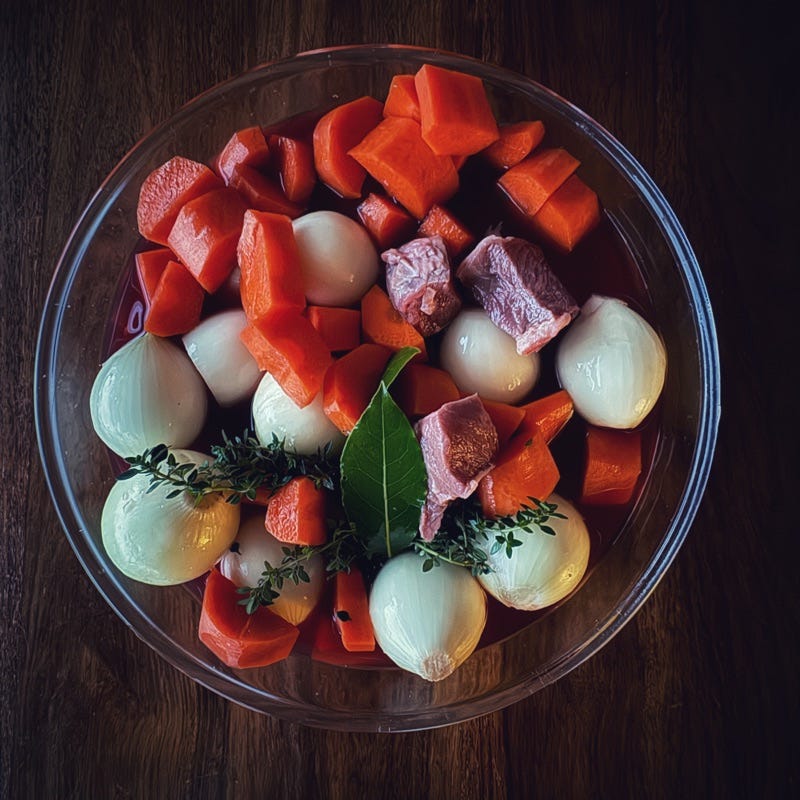

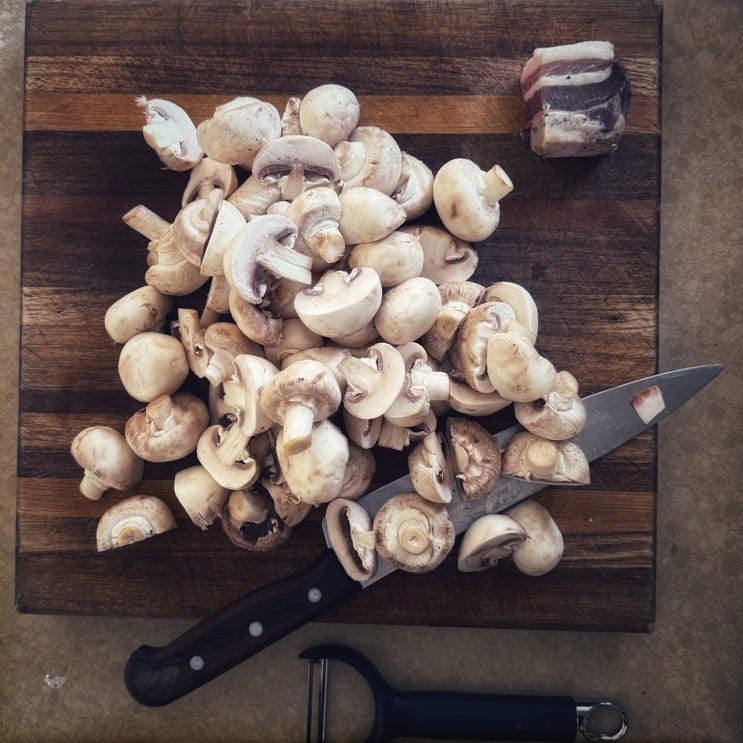
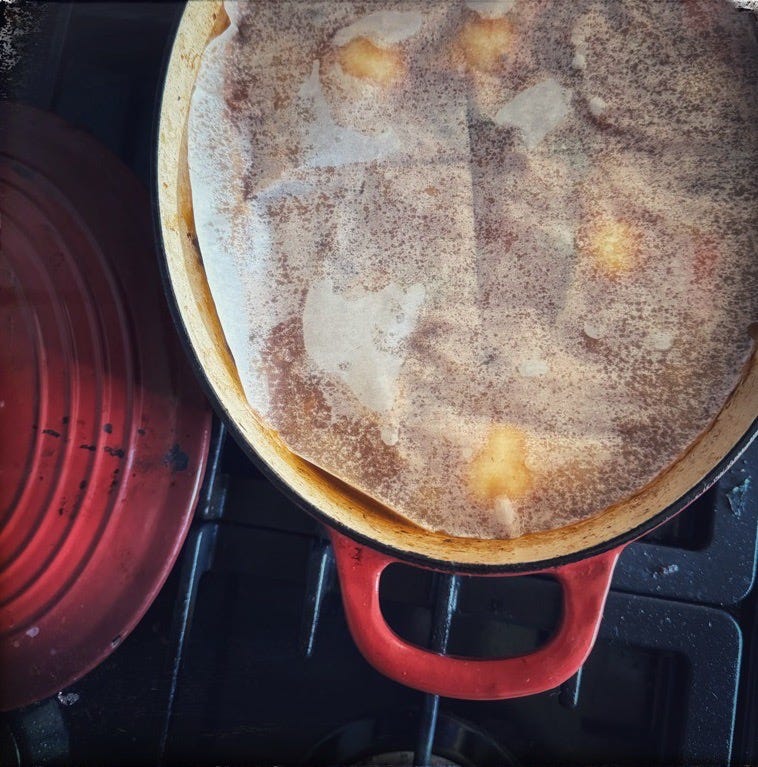
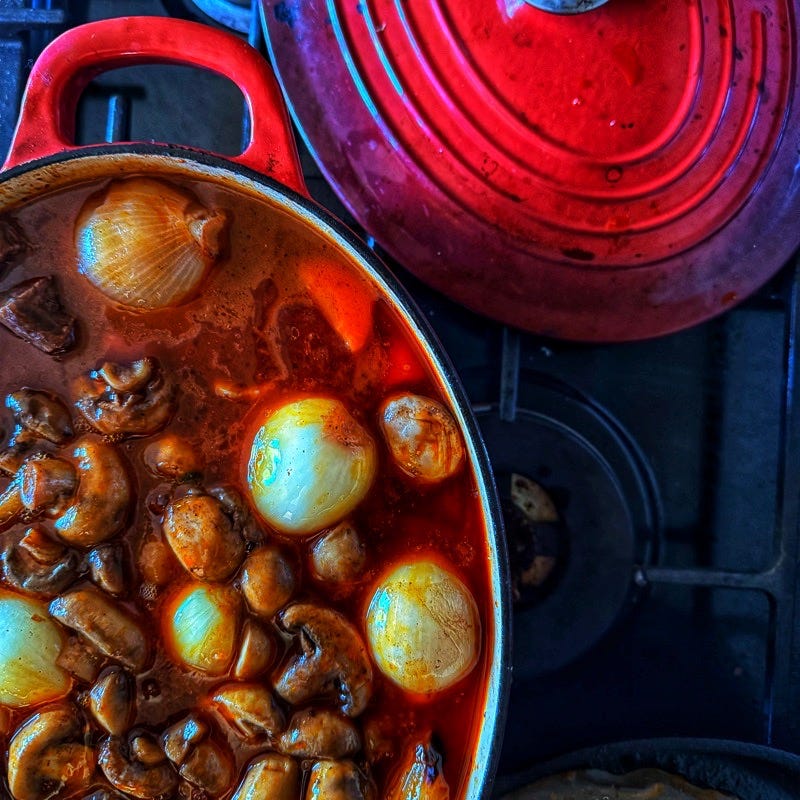
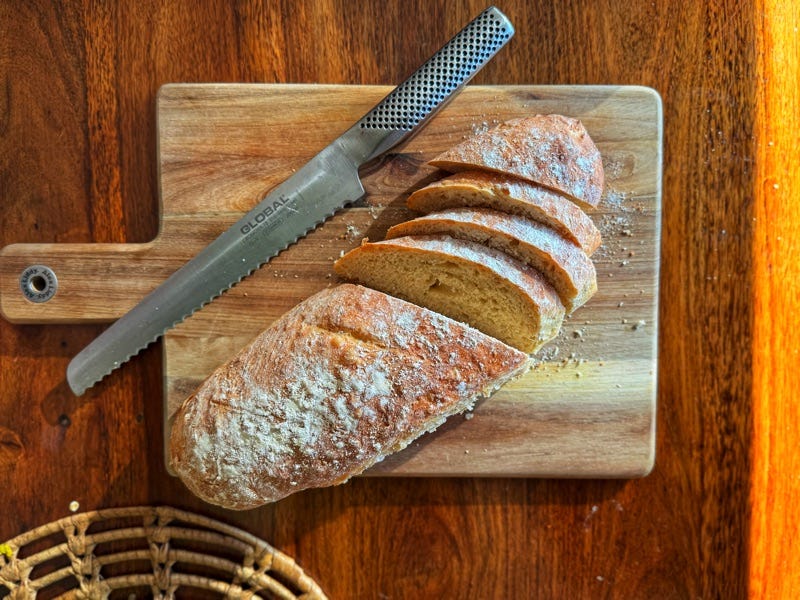


I'm always put off by recipes that need onion since onion and I do not agree, but the idea of putting in whole small ones means I could fish them out, so thank you for illuminating that possibility for me! Garlic, for some reason, is fine, so normally I just use lots of extra garlic. I'm now considering whether I could make this recipe work in my pressure cooker and thereby reducing the delay in gratification. Worth a test, I feel! I have a lot of Nagi's recipes on rotation, especially the chicken and rice, and I have her Ultimate Chocolate Chip Cookie batter portioned in the freezer for unexpected visitors (mostly the MIL, who likes to test my preparedness).
for years I have vowed to make this dish, but am always intimidated by the longevity of the recipe. I've seen a few that take days, and a few that say why bother if you can't get proper ingredients apparently only available in France it seems. Then I read all that work for a few forkfuls/not worth it. All the same, I still want to make it, some version. Since I haven't had it I won't have any thing to compare it to.